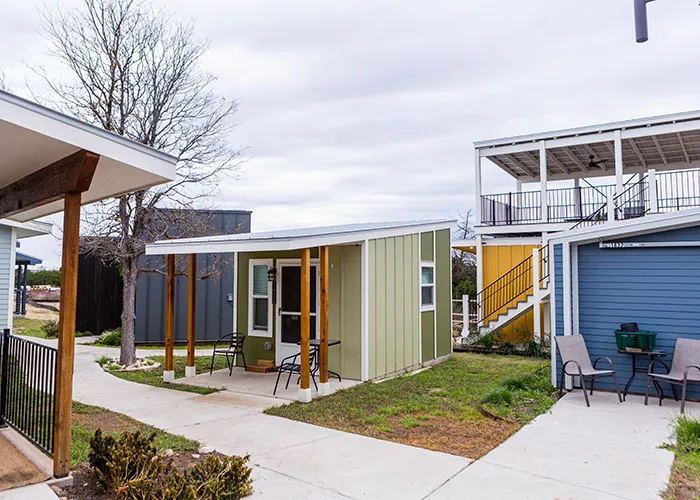I wrote last week about Community First! Village, located on relatively cheap land just east of Austin and getting national applause as the coolest homelessness project in what some call America’s coolest city. There’s plenty of hype in both characterizations, especially since many laudatory magazine articles focus on the tiny homes at CFV that draw admiring eyes, and not the dramas occurring within them.
That’s not surprising. I Googled “tiny house” and came up with up with 418 million results in 1.1 seconds. The Internet is full of pitches: “Come in and find out how easy it is to join the Tiny House movement.” Maybe, but during the 1990s I interviewed several hundred homeless men and saw how hard it is to overcome street habits.
Over the decades I’ve visited programs that have been sobriety first, work first, safety first, or ambition-to-improve first. CFV is none of those. For example, pot-smoking is not a cause for arrest in Austin nor a cause for exclusion at CFV. Those who want to change have access to rehab options, counseling, and support groups, but no such involvement is required.
All CFV residents need to pay $300-500 each month for rent, but how they get the money is up to them, as long as they don’t break laws to get it. Most are on some kind of governmental payout based on age, disability, or general poverty. Some earn money by work at CFV in some capacity from cleaning and landscaping to auto repair or woodworking. Some have outside jobs.
At “stairway” programs, residents can progress from dorm to shared room to private room, all in preparation for an apartment in the world outside. Ambition of that sort motivates some who are younger, but given the wear-and-tear of living on the streets, the average CFV resident at 59 is more like 70 physically and yearning to stay put in the same tiny house, unless new disabilities or marriages occur.
At “safety first” programs, managers screen potential residents to keep out those with records of violence. CFV does not accept RSOs (registered sex offenders) or those convicted of murder or kidnapping, but other prison records are not deal-breakers. CFV does have cameras in all public areas.
The most effective change-oriented programs I’ve seen have been “Jesus first.” Three decades ago NBC’s Today Show interviewed four former addicts thought to have diverse stories, but it turned out that all four gave Christian testimonies. That’s not unusual. At CFV, though, change comes (if it comes at all) not at a church service but through the relationships that develop among non-resident volunteers, paid staff members, and “missional” residents who haven’t been ravaged by homelessness and move in to be good neighbors to those who have been.
A volunteer for an hour might help in the community art house or market. Eight volunteers who offer a day might use SIPS — structural insulated panels — to erect the frame of a home, roof and all, in that one day. Volunteers do not need construction skills but must be able to lift 40 pounds. Those physically weaker but horticulturally strong can let a hundred flowers bloom around the new homes—and there will be lots of them, because CFV is on a path to expand from 325 residents to 1,900 on other relatively inexpensive land east of Austin.
That’s a potential problem, in part because the missional residents have a key role, and considerable self-sacrifice is involved. Questions lurk: As CFV grows will neighborliness take a hit? Can a good thing become too much of a good thing? CFV leaders are also considering additional microhome types that have half baths. This is particularly important for the elderly, but such a change has downsides: maybe less community, certainly higher costs including the toilets themselves and the expense of laying pipes all over.
Can hundreds of CFV’s bloom? Only if their planners don’t see tiny homes as automatic winners, but are thoughtful about little things. For example, it’s easy to say “let’s have porches,” so neighbors sit and visit — but if the porch is raised, that creates a slight barrier between visitor and occupant. New CFV homes have ground-level porches.
In September I’ll visit other innovative projects and let you know what I see.

